Introduction to Forex Trading
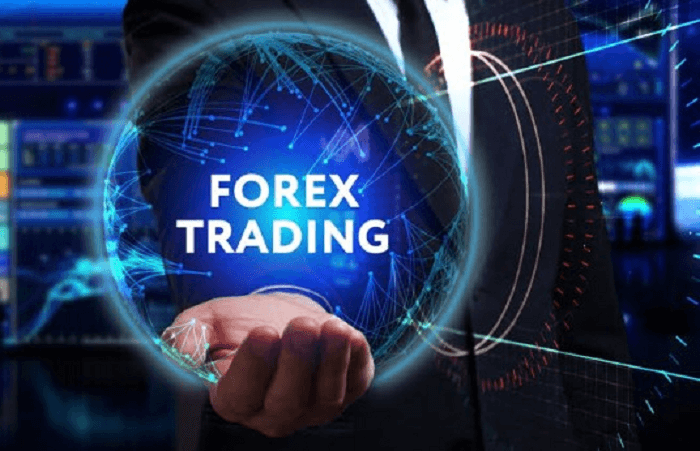

Forex Trading-Introduction
Foreign exchange, or forex (FX), is the global marketplace for trading national currencies against one another. As one of the largest financial markets in the world, it plays a crucial role in international trade and investment by facilitating currency conversions. The forex market operates 24 hours a day, five days a week, across major financial centers worldwide.
How Forex Trading Works
Forex trading involves buying one currency while simultaneously selling another. Currencies are traded in pairs, such as EUR/USD (Euro/US Dollar) or GBP/JPY (British Pound/Japanese Yen). The first currency in the pair is known as the base currency, while the second is the quote currency. The price of a currency pair represents how much of the quote currency is needed to purchase one unit of the base currency.
For example, if the EUR/USD pair is trading at 1.1200, it means that 1 Euro is equivalent to 1.12 US Dollars.
Key Participants in the Forex Market
Banks and Financial Institutions: Major banks are significant players in the forex market, facilitating large transactions for themselves and their clients.
Central Banks: National central banks, like the Federal Reserve or the European Central Bank, can influence currency prices through monetary policy and interventions.
Corporations: Businesses engage in forex trading to manage currency risk associated with international transactions.
Hedge Funds and Investment Managers: These entities trade forex as part of their portfolio management strategies.
Retail Traders: Individual traders participate in the market through forex brokers, aiming to profit from currency fluctuations.
Why Trade Forex?
Liquidity: The forex market is highly liquid, allowing for quick execution of trades and minimal price manipulation.
Leverage: Forex brokers offer leverage, which allows traders to control larger positions with a smaller amount of capital.
24-Hour Market: The continuous operation of the forex market enables traders to respond to news and events from around the world at any time.
Diverse Trading Options: Traders can engage in various strategies, including day trading, swing trading, and long-term investing.
Getting Started with Forex Trading
Education: Learn the fundamentals of forex trading, including market analysis, trading strategies, and risk management.
Broker Selection: Choose a reputable forex broker that offers competitive spreads, reliable execution, and robust trading platforms.
Demo Trading: Practice trading on a demo account to develop your skills and test your strategies without risking real money.
Trading Plan: Develop a trading plan outlining your goals, risk tolerance, and strategy.
Risk Management: Implement risk management techniques, such as setting stop-loss orders and limiting leverage, to protect your capital.
Forex trading can be a rewarding venture for those who take the time to understand the market and develop a disciplined approach. By gaining a solid foundation in forex trading principles and continuously honing your skills, you can navigate the complexities of this dynamic market and work towards achieving your financial goals
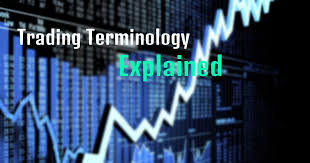

Pip
In the foreign exchange (Forex) market, a "pip" (short for "percentage in point" or "price interest point") is a standard unit of measurement for the change in value of a currency pair. It represents the smallest possible price movement in the exchange rate of a currency pair, based on market convention.
Example Calculations:
If the EUR/USD moves from 1.1234 to 1.1235, this movement is one pip.
If the USD/JPY moves from 110.45 to 110.46, this movement is one pip.
Forex Trading Terminologies
Pipette
A pipette, also known as a micro pip, is one-tenth of a pip. This means that if a pip represents a 0.0001 change, a pipette represents a 0.00001 change. In other words, a pipette provides an extra decimal place of precision in pricing.
For example, if the EUR/USD currency pair moves from 1.23456 to 1.23457, this movement represents one pipette.
BID and ASK
Bid Price:
The price at which a trader can sell a currency pair. It is always lower than the ask price.
Ask Price:
The price at which a trader can buy a currency pair. It is always higher than the bid price.
Spread
The difference between the bid price (the price at which a trader can sell) and the ask price (the price at which a trader can buy). For example, if the EUR/USD bid price is 1.1200 and the ask price is 1.1202, the spread is 2 pips.
Leverage
A tool that allows traders to control larger positions with a smaller amount of capital. For example, with 100:1 leverage, a trader can control $100,000 with only $1,000 of their own money.
Margin
The amount of money required to open and maintain a leveraged position. It is a form of collateral to cover any potential losses. For example, with 100:1 leverage, the margin required for a $100,000 position would be $1,000.
Lot
A standardized unit of currency in forex trading. The standard lot size is 100,000 units of the base currency. There are also mini lots (10,000 units) and micro lots (1,000 units).
Long Position
Buying a currency pair with the expectation that its value will increase. For example, if a trader buys EUR/USD, they are going long on the euro and short on the dollar.
Short Position
Selling a currency pair with the expectation that its value will decrease. For example, if a trader sells EUR/USD, they are shorting the euro and going long on the dollar.
Stop-Loss Order
An order placed to automatically sell a currency pair when it reaches a certain price, used to limit potential losses. For example, a trader long on EUR/USD at 1.1200 might set a stop-loss at 1.1150 to cap their loss at 50 pips.
Take-Profit Order
An order placed to automatically close a position when it reaches a certain profit level. For example, a trader long on EUR/USD at 1.1200 might set a take-profit at 1.1250 to lock in a 50-pip profit.
Currency Pair
The quotation of two different currencies, with the value of one currency being quoted against the other. For example, EUR/USD is a currency pair where the euro is the base currency and the US dollar is the quote currency.
Base Currency
The first currency listed in a currency pair. For example, in EUR/USD, the euro (EUR) is the base currency.
Quote Currency
The second currency listed in a currency pair. For example, in EUR/USD, the US dollar (USD) is the quote currency.
Bull Market
A market condition where prices are rising or expected to rise.
Bear Market
A market condition where prices are falling or expected to fall.
Technical Analysis
The study of past market data, primarily price and volume, to forecast future price movements. Traders use tools like charts and indicators to perform technical analysis.
Fundamental Analysis
The study of economic, financial, and other qualitative and quantitative factors to determine the intrinsic value of a currency. This includes analyzing economic indicators, interest rates, and geopolitical events.
Hedging
A strategy used to offset potential losses in one position by taking an opposite position in a related asset. For example, a trader might hedge a long EUR/USD position by taking a short position in EUR/GBP.
CFD (Contract for Difference)
A financial instrument that allows traders to speculate on the price movement of an asset without owning the underlying asset. Forex trading often uses CFDs to enable trading on currency movements.
Swap/Rollover
The interest paid or received for holding a position overnight. This is determined by the interest rate differential between the two currencies in the pair.
Liquidity
The ease with which an asset can be bought or sold in the market without affecting its price. The forex market is known for its high liquidity due to its large trading volume.
Volatility
A measure of how much the price of a currency pair fluctuates over a certain period. High volatility means larger price swings, while low volatility means smaller price movements.
Order Types
Different ways to enter or exit trades. Common order types include market orders, limit orders, stop orders, and trailing stop orders.
Broker
An intermediary that facilitates forex trading by providing access to the market. Brokers offer trading platforms, tools, and services for executing trades.
Understanding these terminologies is essential for navigating the forex market and making informed trading decisions
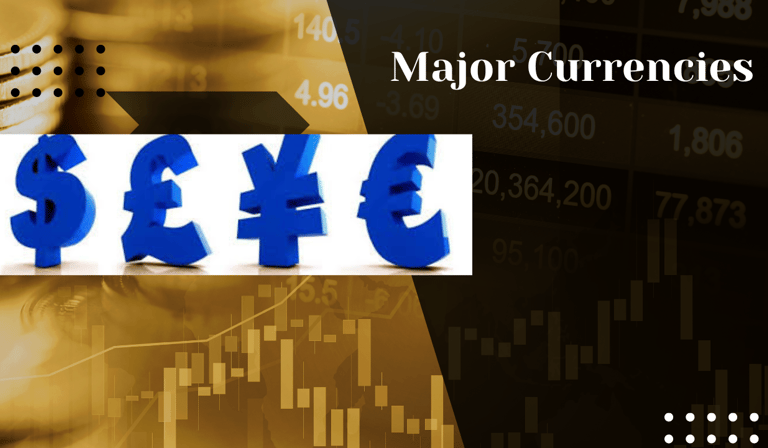

Currency Majors
The term "currency majors" refers to the most traded and liquid currency pairs in the foreign exchange (forex) market. These pairs involve the world's major currencies and are typically characterized by high trading volumes, tight spreads, and significant market influence. The currency majors include the following pairs:
EUR/USD - Euro / US Dollar
USD/JPY - US Dollar / Japanese Yen
GBP/USD - British Pound / US Dollar
USD/CHF - US Dollar / Swiss Franc
AUD/USD - Australian Dollar / US Dollar
USD/CAD - US Dollar / Canadian Dollar
NZD/USD - New Zealand Dollar / US Dollar
These pairs are popular among traders due to their liquidity and volatility, making them ideal for both short-term and long-term trading strategies.
Majors And Cross Currency Pairs
Cross currency pairs
Cross currency pairs are currency pairs that do not include the US Dollar (USD). These pairs involve the exchange of one foreign currency for another without the direct involvement of USD, which distinguishes them from the major currency pairs that typically involve USD. Cross currency pairs provide opportunities for traders to trade different currencies directly, bypassing the US Dollar.
Some examples of cross currency pairs include:
EUR/GBP - Euro / British Pound
EUR/JPY - Euro / Japanese Yen
EUR/CHF - Euro / Swiss Franc
GBP/JPY - British Pound / Japanese Yen
GBP/AUD - British Pound / Australian Dollar
AUD/JPY - Australian Dollar / Japanese Yen
NZD/JPY - New Zealand Dollar / Japanese Yen
CHF/JPY - Swiss Franc / Japanese Yen
CAD/JPY - Canadian Dollar / Japanese Yen
AUD/NZD - Australian Dollar / New Zealand Dollar
These pairs are also actively traded in the forex market and can offer diverse trading opportunities, especially when market conditions affect specific regions or currencies differently.
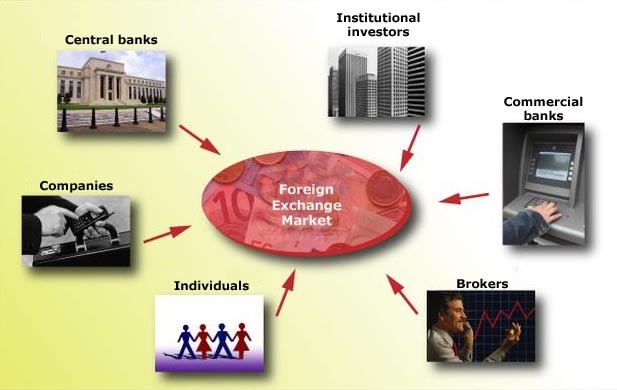

Forex (foreign exchange) trading involves a diverse range of participants from various sectors. These participants can be broadly categorized into the following groups:
Who Trades Forex
1. Central Banks
Central banks, such as the Federal Reserve (USA), European Central Bank (ECB), Bank of Japan (BoJ), and others, play a crucial role in forex markets. They trade currencies to manage their national reserves, implement monetary policy, and stabilize their respective currencies.
2. Commercial Banks and Financial Institutions
Commercial banks and large financial institutions conduct a significant portion of forex trading. They trade on behalf of their clients, which include businesses, governments, and other financial entities. These institutions also engage in speculative trading to profit from currency movements.
3. Hedge Funds
Hedge funds are investment funds that employ various strategies to earn active returns for their investors. They often engage in speculative trading in the forex market, using leverage to amplify their positions and seeking to profit from both long and short-term currency movements.
4. Corporations
Multinational corporations participate in forex trading to facilitate international trade and manage foreign exchange risk. For instance, a company importing goods from another country may need to buy foreign currency to pay for those goods.
5. Retail Traders
Individual retail traders participate in the forex market through online trading platforms provided by brokers. These traders aim to profit from fluctuations in currency exchange rates and often use various trading strategies, tools, and analysis to make decisions.
6. Investment and Pension Funds
Investment funds, pension funds, and insurance companies may also engage in forex trading as part of their broader investment strategies. They typically trade currencies to hedge against currency risk associated with their international investments.
7. Governments and Sovereign Wealth Funds
Governments and sovereign wealth funds trade currencies to manage their foreign exchange reserves and invest in foreign assets. These entities often have significant resources and can influence forex markets through their large-scale transactions.
8. Brokers and Market Makers
Forex brokers act as intermediaries between retail traders and the interbank forex market. Market makers provide liquidity by quoting both buy and sell prices, facilitating smooth transactions in the market.
9. Speculators
Speculators are traders who seek to profit from changes in exchange rates. They include individual traders, hedge funds, and proprietary trading firms. Speculators do not necessarily have an underlying business need for foreign currency; instead, they aim to make profits from market movements.
10. International Organizations
International organizations, such as the International Monetary Fund (IMF) and the World Bank, may also engage in forex transactions as part of their financial operations and support programs for member countries.
Each of these participants has different motivations and strategies for trading in the forex market, contributing to its liquidity and dynamism.
Forex Market Size and Liquidity
Market Size
The forex market is the largest and most liquid financial market in the world. It operates on a global scale, with a daily trading volume exceeding $6.6 trillion as of 2021, according to the Bank for International Settlements (BIS). This immense volume far surpasses that of any other financial market, including the stock and bond markets.
Several factors contribute to the forex market's massive size:
Global Participation: The forex market involves participants from all over the world, including central banks, commercial banks, financial institutions, corporations, hedge funds, and individual traders.
Round-the-Clock Trading: The market operates 24 hours a day, five days a week, across different time zones. This continuous operation ensures that there is always activity in the market, contributing to its vast size.
Economic Integration: The interconnected nature of the global economy necessitates constant currency exchanges for international trade and investment, driving significant forex trading volume.
Major Trading Centers
The forex market does not have a centralized exchange. Instead, it operates through an interbank system across various financial centers worldwide. The major trading centers include:
London: The largest forex trading center, accounting for around 34% of global trading volume.
New York: Another key hub, contributing approximately 16% of global trading volume.
Tokyo: Significant for Asian trading hours, contributing around 8% of global trading volume.
Singapore and Hong Kong: Both are important centers in the Asian market, each accounting for about 7% of global trading volume.
Market Liquidity
Liquidity in the forex market refers to the ability to buy or sell currency pairs without causing significant price changes. The forex market is renowned for its high liquidity, which offers several advantages:
Tight Spreads: High liquidity leads to narrower bid-ask spreads, reducing trading costs for participants.
Efficient Price Discovery: The large number of participants and high trading volume ensure that prices reflect available information quickly and accurately.
Ease of Entry and Exit: Traders can enter and exit positions swiftly, even with large orders, without significantly affecting market prices.
Reduced Slippage: High liquidity minimizes slippage, which is the difference between the expected price of a trade and the actual price at which it is executed.
Factors Affecting Liquidity
Time of Day: Liquidity varies throughout the day, peaking when major financial centers overlap. For example, liquidity is highest during the London-New York overlap.
Economic Data Releases: Significant economic events and data releases can temporarily increase market liquidity as traders react to new information.
Market Sentiment: General market conditions and sentiment can affect liquidity, with more active markets typically exhibiting higher liquidity.
Benefits of High Liquidity
Lower Transaction Costs: Reduced spreads and lower slippage make trading more cost-effective.
Stability: High liquidity contributes to market stability by absorbing large trades without significant price disruptions.
Flexibility: Traders can implement various strategies, including scalping, day trading, and swing trading, with greater ease due to the ready availability of buyers and sellers.
The forex market's enormous size and high liquidity make it an attractive venue for traders and investors. Its 24-hour operation, tight spreads, and efficient price discovery provide a conducive environment for a wide range of trading strategies. Understanding the dynamics of market size and liquidity is crucial for anyone looking to participate in forex trading, as these factors significantly influence trading conditions and opportunities.


Forex trading can be conducted through various platforms, primarily provided by forex brokers. Here are the main venues where you can trade forex:
Where to Trade Forex
1.Online Forex Brokers
These brokers offer trading platforms where retail traders can access the forex market. Popular brokers include:
MetaTrader 4 (MT4) and MetaTrader 5 (MT5): Widely used trading platforms offered by many brokers.
cTrader: Known for its intuitive interface and advanced trading features.
2.Proprietary Platforms
Custom platforms developed by brokers, such as Thinkorswim (TD Ameritrade) or SaxoTrader (Saxo Bank).
3.Financial Institutions
Some banks and financial institutions offer forex trading services, primarily to larger clients such as corporations and institutional investors.
4.Forex Exchanges
In some regions, forex trading can be conducted on exchanges, such as the Moscow Exchange (MOEX) or the Dubai Gold and Commodities Exchange (DGCX).
How to Choose a Forex Broker
Choosing the right forex broker is crucial for successful trading. Here are key factors to consider when selecting a broker:
Regulation and Reputation:
Ensure the broker is regulated by a reputable financial authority (e.g., FCA in the UK, ASIC in Australia, CFTC in the USA).
Check reviews and ratings from other traders to gauge the broker’s reputation.
Trading Platform:
Assess the broker's trading platform for user-friendliness, reliability, and available features.
Ensure the platform offers the tools and indicators you need for your trading strategy.
Spreads and Commissions:
Compare the spreads and commissions charged by different brokers.
Lower costs can significantly impact profitability, especially for frequent traders.
Leverage and Margin Requirements:
Check the leverage options available and ensure they align with your risk management strategy.
Be aware of the margin requirements and how they affect your trading.
Range of Instruments:
Ensure the broker offers a wide range of currency pairs and other financial instruments if you plan to diversify your trading.
Customer Service:
Evaluate the quality of customer support, including availability, responsiveness, and helpfulness.
Consider brokers that offer 24/7 support, especially if you plan to trade outside regular business hours.
Deposit and Withdrawal Options:
Check the available methods for depositing and withdrawing funds.
Ensure the broker offers convenient and secure options with reasonable processing times.
Educational Resources:
Look for brokers that provide educational materials, such as tutorials, webinars, and market analysis.
Resources for learning and staying informed can be invaluable, especially for beginners.
Account Types:
Determine if the broker offers different account types to suit various trading styles and capital levels.
Look for features like demo accounts to practice trading without risking real money.
Additional Features:
Some brokers offer additional features such as social trading, automated trading options, and research tools.
Evaluate these features based on your trading preferences and needs.
Steps to Start Trading Forex
Research and Select a Broker: Use the criteria above to choose a reputable broker that meets your needs.
Open an Account: Complete the broker’s application process, which typically involves providing personal information and verifying your identity.
Deposit Funds: Fund your trading account using one of the broker’s available deposit methods.
Download and Set Up the Trading Platform: Install the trading platform provided by the broker and customize it to suit your preferences.
Develop a Trading Plan: Create a strategy based on your analysis and risk tolerance.
Start Trading: Begin placing trades based on your analysis and strategy. Monitor your positions and adjust your strategy as needed.
Continuous Learning: Keep educating yourself about the forex market, strategies, and news to improve your trading skills.
By carefully selecting a broker and developing a solid trading plan, you can enhance your chances of success in the forex market.
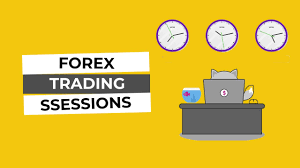

The forex market operates 24 hours a day, five days a week, thanks to the global network of financial centers in different time zones. This continuous operation is divided into four major trading sessions: the Sydney session, the Tokyo session, the London session, and the New York session. Each session has unique characteristics and trading volumes, influencing the market's behavior.
Forex Trading Sessions
1. Sydney Session
Time: 10:00 PM to 7:00 AM GMT
Key Features:
The Sydney session marks the beginning of the forex trading week.
Trading activity is generally lower compared to other sessions.
Currency pairs involving the Australian Dollar (AUD) and New Zealand Dollar (NZD) are more active.
Market movements can be influenced by economic news and data from Australia and New Zealand.
2. Tokyo Session (Asian Session)
Time: 12:00 AM to 9:00 AM GMT
Key Features:
The Tokyo session overlaps with the end of the Sydney session.
High trading volume for currency pairs involving the Japanese Yen (JPY), such as USD/JPY, EUR/JPY, and GBP/JPY.
Market movements can be influenced by economic news from Japan, China, and other Asian countries.
Generally, this session has lower volatility compared to the London and New York sessions.
3. London Session (European Session)
Time: 8:00 AM to 5:00 PM GMT
Key Features:
The London session overlaps with the end of the Tokyo session and the beginning of the New York session, making it one of the most active trading periods.
High trading volume and liquidity, particularly for EUR/USD, GBP/USD, and USD/CHF.
Major economic news releases from the Eurozone and the UK can cause significant market movements.
London is the largest forex trading center, accounting for around 34% of global trading volume.
4. New York Session (North American Session)
Time: 1:00 PM to 10:00 PM GMT
Key Features:
The New York session overlaps with the London session, creating high liquidity and volatility.
Significant trading volume for USD pairs, such as EUR/USD, GBP/USD, USD/JPY, and USD/CAD.
Major economic news releases from the United States can cause significant market movements.
The New York session accounts for about 16% of global forex trading volume.
Session Overlaps
The overlap between sessions is when trading activity and liquidity peak. These periods often offer the best trading opportunities due to increased volatility and tighter spreads.
Tokyo-London Overlap: 8:00 AM to 9:00 AM GMT
This overlap has relatively less activity compared to others but can still provide trading opportunities, especially for JPY pairs.
London-New York Overlap: 1:00 PM to 5:00 PM GMT
This is the most active overlap, where major market movements often occur.
High volatility and liquidity as traders from two of the largest financial centers participate in the market.
An ideal time for day traders due to the significant price swings and tighter spreads.
Best Times to Trade
High Volatility: During session overlaps, particularly the London-New York overlap, due to increased trading volume and market participation.
Economic Releases: Around the release of major economic data and news, especially from the US, Eurozone, and UK, as they can cause sharp market movements.
Currency Pair Specific: Depending on the currency pairs being traded, for example:
JPY pairs during the Tokyo session.
EUR and GBP pairs during the London session.
USD pairs during the New York session.
Understanding the different forex trading sessions and their characteristics can help traders optimize their trading strategies and timing. By aligning trading activities with periods of high liquidity and volatility, traders can improve their chances of capturing significant market movements and achieving better trading outcomes. Always consider your trading style and the specific currencies you trade when planning your activities around these sessions.
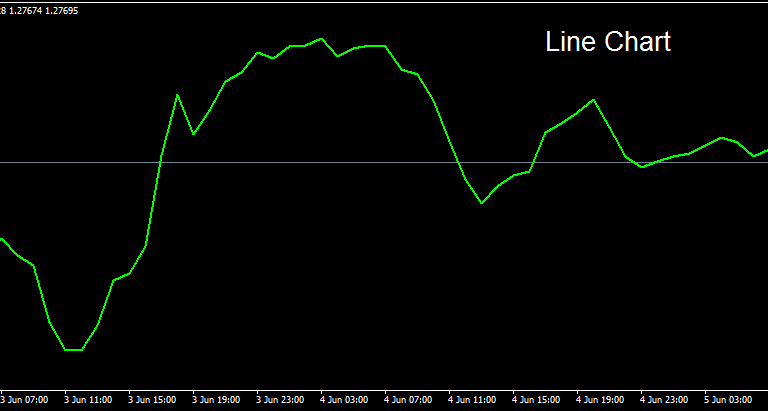

1. Line Chart
Description:
A line chart is the simplest form of chart that connects closing prices of a currency pair with a continuous line.
It provides a clear view of the price movement over a specific period.
Types Of Charts
Advantages:
Simplicity: Easy to understand and use for beginners.
Trend Identification: Good for quickly identifying the overall trend of the market.
Disadvantages:
Limited Information: Does not show opening prices, highs, lows, or detailed price action within the timeframe.
Usage:
Often used for a broad overview of price trends and for long-term analysis.
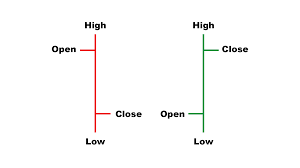

2. Bar Chart
Description:
A bar chart provides more detailed information than a line chart. Each bar represents a specific time period (e.g., one hour, one day).
Each bar displays the opening, high, low, and closing prices (OHLC) for the time period.
Advantages:
Comprehensive Data: Shows OHLC prices, providing more insight into price movements.
Trend Analysis: Useful for identifying price patterns and trends.
Disadvantages:
Complexity: Can be more difficult to read and interpret for beginners compared to line charts.
Usage:
Favored by traders who need more detailed information about price movements within each timeframe..
3. Candlestick Chart
Description:
A candlestick chart is similar to a bar chart but uses "candlesticks" to represent the same OHLC data.
Each candlestick has a body (the range between the opening and closing prices) and wicks or shadows (the high and low prices).
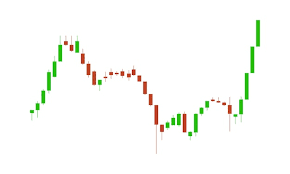

Advantages:
Visual Appeal: Easy to interpret, with colors often used to indicate price direction (e.g., green for up, red for down).
Pattern Recognition: Excellent for identifying specific price patterns and market sentiment.
Disadvantages:
Learning Curve: Requires some learning to understand various candlestick patterns and their implications.
Usage:
Widely used by traders due to the detailed information and visual cues they provide. Ideal for technical analysis and short-term trading.
Conclusion
Each type of chart has its own strengths and is suitable for different trading styles and levels of analysis:
Line Chart: Best for a quick, high-level overview of the market trend.
Bar Chart: Provides a detailed look at price movements within each period, suitable for more in-depth analysis.
Candlestick Chart: Combines detailed price information with easy-to-interpret visual patterns, making it highly popular among traders for technical analysis.
By understanding and using these charts, traders can make more informed decisions based on their preferred style and the level of detail they require.
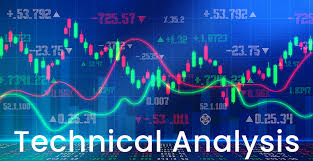

1. Technical Analysis
Technical analysis involves examining past market data, primarily price and volume, to forecast future price movements. Key tools and concepts used in technical analysis include:
Types of Analysis
Charts: Line charts, bar charts, candlestick charts.
Indicators and Oscillators: Moving averages, Relative Strength Index (RSI), Moving Average Convergence Divergence (MACD), Bollinger Bands.
Patterns: Head and shoulders, double tops and bottoms, triangles, flags, and pennants.
Support and Resistance Levels: Identifying price levels where the market historically reverses direction.
Trend Lines and Channels: Drawing lines on charts to determine the direction and strength of the trend.
Fibonacci Retracement: Using Fibonacci ratios to identify potential reversal levels.
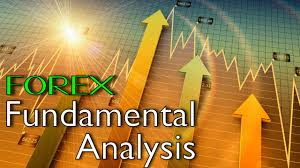

2. Fundamental Analysis
Fundamental analysis involves evaluating a currency's value based on economic, social, and political factors. Key elements include:
Economic Indicators: GDP growth rates, unemployment rates, inflation rates, retail sales, industrial production.
Central Bank Policies: Interest rates, quantitative easing, monetary policy statements.
Political Stability and Economic Performance: Political events, government stability, fiscal policies.
News Releases: Economic reports, geopolitical events, natural disasters, and other news that can impact the market.
Inter-market Relationships: Analyzing the relationship between different markets, such as commodities, bonds, and equities, to forecast currency movements.
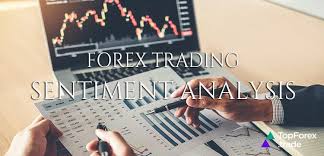

3. Sentiment Analysis
Sentiment analysis gauges the mood of the market participants to predict potential price movements. It involves:
Commitment of Traders (COT) Report: A weekly report by the Commodity Futures Trading Commission (CFTC) that shows the positions of futures traders.
Retail Sentiment Indicators: Data from brokers showing the proportion of traders who are long or short a particular currency pair.
News and Social Media Sentiment: Analyzing the tone of news reports, financial blogs, forums, and social media posts to assess market sentiment.
Surveys and Polls: Sentiment surveys such as the AAII Sentiment Survey that reflect the opinions of individual investors.
Combined Approach
Many traders use a combination of these analyses to form a more comprehensive view of the market. For example, they might use technical analysis to identify entry and exit points, fundamental analysis to understand the underlying forces driving the market, and sentiment analysis to gauge market sentiment and potential turning points.
Conclusion
Understanding and effectively using these types of analysis can significantly enhance a trader's ability to make informed and strategic trading decisions in the forex market. Each type of analysis offers unique insights and, when combined, can provide a well-rounded perspective on potential market movements.
